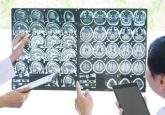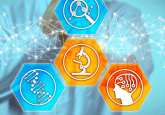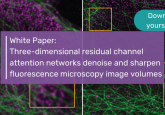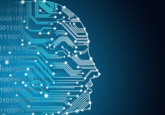AI is here to supercharge pathologists, not replace them
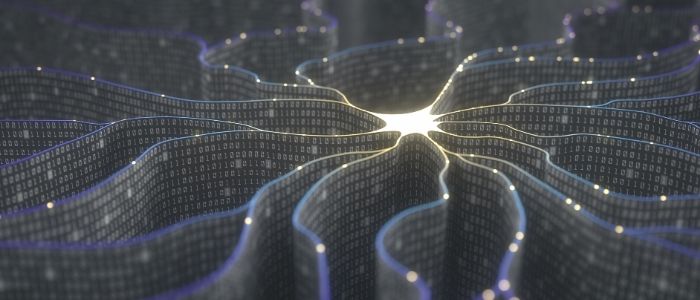
The fear is real. Artificial intelligence (AI) and automation have started to replace jobs in some industries. However, despite all the fear mongering, healthcare should not be lumped into this group. Pathology in particular is not a career path that will be lost to aspiring humans, but rather will be and already is in many cases, greatly assisting these healthcare professionals and enabling them to develop superhuman powers.
Pathologists are vital to clinicians, patients and medicine overall. Yet, they are some of the most overworked employees in healthcare systems around the world. We are all becoming more and more aware of the worrisome statistics. Cancer rates are rising, chronic disease prevalence is increasing, populations are aging faster. With more disease, comes more patients and more samples to be analyzed by pathologists.
While the number of samples increases – some hospitals process over 1000 pathology slides in one day – fewer medical professionals are actually specializing in this field. From 2007 to 2017 the number of pathologists in the USA decreased by 17.5%. Meanwhile in Europe, in the UK specifically, a 2017 survey conducted by the Royal College of Pathologists found sufficient staffing numbers in only 3% of pathology departments in the whole of the NHS.
Besides exhaustion, burnout and increasing amounts of stress, what else can this strain on pathologists result in? Diagnostic delays and errors. Increased costs due to the need for outsourcing services. A ripple effect is created: from sample to pathologist to patient. The overload can have dire consequences for all.
Digitalization: the origins of the superhero pathologist
Now, back to pondering the rise of machines. Nature published a survey in 2019 assessing physician perspectives on the integration of AI into diagnostic pathology. The survey found that only a small number expressed fear that AI will displace the pathologist out of their job. So what then, will AI enable?
Firstly it should be noted that AI is not the first wave of digitization to hit this field of medicine. Digital pathology has been around for quite a few years. It has allowed pathologists to at least stop hunching over a microscope as images are digitized and can be viewed on a computer. There are also no more issues transporting slides; these can be shared digitally, and this is made especially easy with a cloud-based platform like Aiforia.
The power of superhuman speed
While digital pathology has certainly made the pathologist’s life easier ergonomically, machine intelligence is set to not only ease the pathologist’s life but to actually supercharge them. The fear of replacement is not real in this field but rather AI will take over the jobs of the pathologist that they should not be doing in the first place.
Tedious, time-consuming and manual tasks can be automated with AI. For example pathologists around the world are already using Aiforia’s deep learning AI to automate work like mitotic count. Automating these tasks not only gives these healthcare professionals more time to focus on bigger picture problems but they are also getting the answers they need faster.
The pathologist is also empowered with AI as the technology brings with it a method that allows standardization. AI algorithms analyze consistently, removing inter- and intra-observer bias. Nelli Sjöblom, a pathologist at the University of Helsinki (finland), when asked about using Aiforia’s deep learning AI platform, described the standardization it produces: “And what’s more, the results are completely consistent. The AI doesn’t have bad days like us humans do.”
The power of superhuman eyesight
Faster, better, and also stronger. Machine intelligence not only has the capability to enable pathologists to analyze samples with more speed and ease but to also find more in their samples. AI systems, especially deep learning-based ones, are incredibly powerful at analyzing images, far surpassing human capability.
AI is also superhuman at detecting subtle changes and rare features. This is particularly useful in areas like immuno-oncology (IO) and drug development in immunotherapy; all are fields which require more complex image analysis challenges to be tackled, such as the identification and quantification of biomarkers.
An aiForward participant using Aiforia Create to develop an AI algorithm to score the popular biomarker PD-L1 in non-small cell lung cancer described to us: “Pulmonary pathologists are finding it difficult to score PD-L1 on lung biopsies and disagree in 15—20% of all cases.” She also added of the results they have achieved so far: “The Aiforia AI really does something that we could not do otherwise, and the results are looking good.”
Artificial intelligence is an efficient sidekick
Charles Friedman, Professor of Information and Public Health at the University of Michigan (USA), recently described a fundamental theorem of biomedical informatics: “A person working in partnership with an information resource is better than that same person unassisted.” This is highly relevant to the relationship between pathologists and artificial intelligence systems.
AI and machine vision systems have not been developed with the intention of replacing pathologists. They are here to help elevate pathologists to the superhero status they deserve. AI systems are assistive technologies, enabling healthcare professionals to be more efficient and confident decision makers; giving them the respite they deserve from the monotonous tasks that should actually be replaced by machines.
You can find more resources and articles like this at: www.aiforia.com
References
https://jamanetwork.com/journals/jamanetworkopen/fullarticle/2734800
https://thepathologist.com/outside-the-lab/all-in-a-days-work
https://thebiomedicalscientist.net/science/total-digital-pathology
https://healthcare-in-europe.com/en/news/bridging-the-gap-between-pathologist-algorithm.html
Learn more about Aiforia here.


